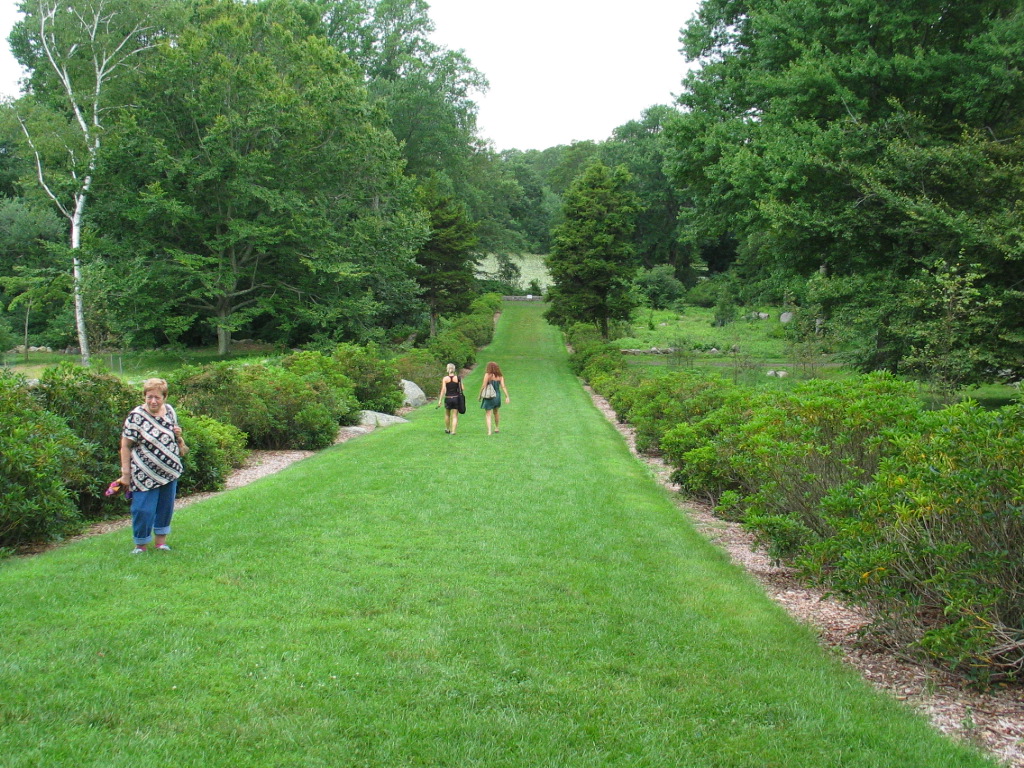The portion of the Connecticut College Arboretum located across Williams Street is simply known as “The Arbo” by most Conn students, and while it is a large and popular piece of the Connecticut College Arboretum, there is much more to the Arbo than this well-traveled section. The entire College campus is technically a continuous piece of the Arbo, and so is the Village section across Route 32. Also included is the area behind the Athletic Center out to and including Mamacoke Island, the Goodwin Natural Area, or Fire trails, across Gallows Lane, and the pine forest trails behind North Lot.
Blake O’Neal ’19, a student employee at the Arboretum, said that “there are 750 plus acres total, if you include the main campus and everything.” Looking at a map of the Arbo, which can be found on the Connecticut College website, the campus itself makes up less than a quarter of the total land area. The rest of the Arboretum surrounds campus and is begging to be explored.
Of the Williams Street Arboretum, which is divided into the Native Plant collection around the pond, and the Bolleswood Natural Area behind it, O’Neal said: “It goes back pretty far past the cliffs, I know there’s another gate eventually, but it’s out there.” O’Neal also encouraged students to explore the outer reaches of the Arbo, which extends out almost to Bloomingdale road in Waterford. I have tried to reach this other gate, and let me tell you there is a lot of open forest and other mystical stuff out there (deer, sea serpents, etc.) before you get anywhere near the back fence.
The largest piece of the Arbo is the Goodwin Natural Area, extending north from Gallows Lane around two miles to past Dunbar Road. The trails in this area are great for walking or jogging, and include some colonial foundations and old rock walls. When I asked O’Neal about his favorite part of the Arbo, he advised me to “Not sleep on the CBG (Caroline Black Garden). I have great memories there of waking up before class and taking a stroll when the sun is coming up, it’s very beautiful.” The Caroline Black Garden along Route 32, a common nightly shortcut between the Ridge and Winchester apartments, is truly much more than just a shortcut, and students are advised to visit the area during the daylight hours.
Mamacoke is another part of the Arbo that is commonly slept on. While it is a walk to get there, the island, a remnant from the glaciers that chewed up the land in the last ice age, is a gorgeous place for walks and any number of walking related activities. The cliffs are great for climbing, the bog is great for hiding bodies, and the trees are also great for climbing. The island is only marred by the large submarine facility across the river that ruins the scenic view, and though I worry about the resultant potentially radioactive fish, this is a small asterisk on an otherwise beautiful habitat.
O’Neal says his job in the arboretum staff is a very enjoyable one. Although he cannot do homework on the clock as many students do at their desk jobs, he appreciates that “you’re outside in the Arbo in different environments, and you get to use heavy machinery, which is fun. They don’t really let you use the tractors, but we use the four wheelers all the time.” He also said a job perk is telling people to stop running in the Arbo, a duty that the arboretum staff saves for younger employees, to maximize awkwardness. “They’ll watch you and laugh when you tell them to stop running.” Running is permitted in many parts of the Arbo, but not in the Native Plants collection. The trails behind the Athletic Center are well suited for this activity, and Coast Guard cadets are often in this area, offering a hearty “Go bears!” to any passerby.
The Native Plants Collection is the most visited and most famous section of the Arbo, the area around the central pond and the surrounding fields and trails. This is a well-manicured and picturesque landscape great for hanging out in, as any Conn student will tell you, and most plants are labelled with plaques for easy identification and fun fact gathering. The cliffs further back are another essential hangout spot, although tripping or falling are all too common.
An excellent resource online for Arboretum information is the “maps” section of the Conn website, including two recently added interactive Arboretum maps. These maps are zoomable and clickable, Google Earth-style, but also include the location and name of every plant on the main campus and in the Native Plant and Caroline Black Collections. They are a great tool for anyone with an interest in our campus, plants, maps, or all three. There are other maps available on this page if you don’t get your map fix in with the first two.
All Conn students should try to visit all pieces of the Arbo in their time here. Everyone has to walk, and we have some beautiful areas around us that excel at being walked in.









